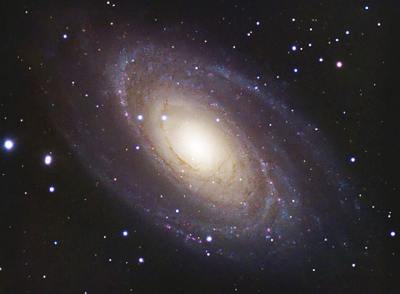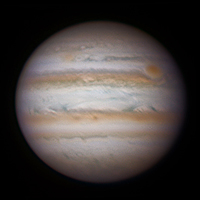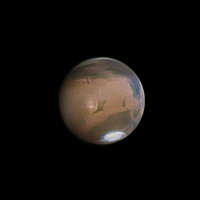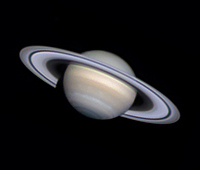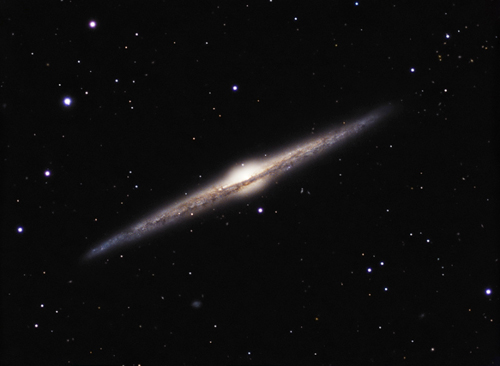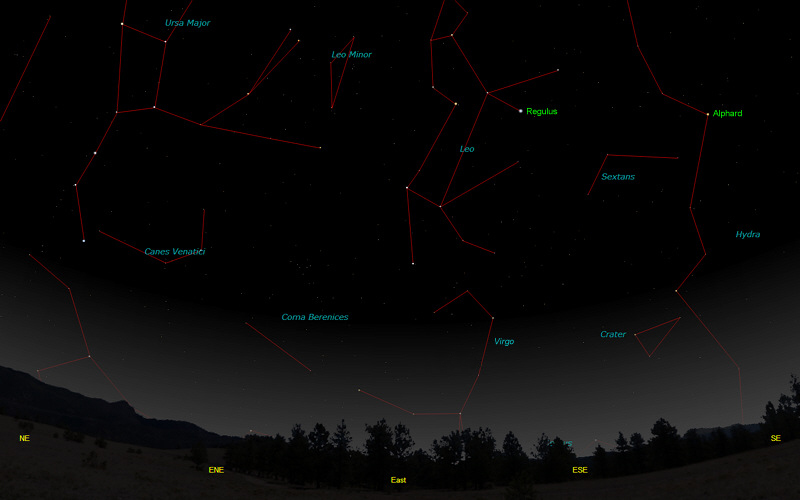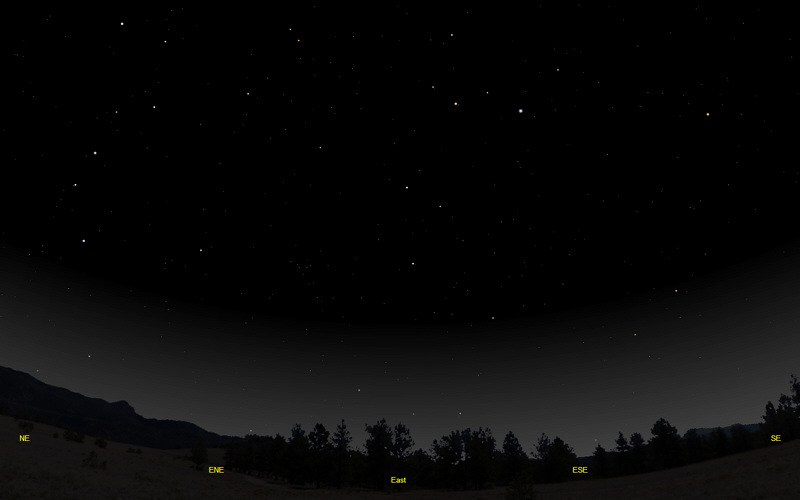The purpose of this feature is to give scout leaders, educators and naturalists an idea of some of the natural events coming up each month. We will try to cover a variety of natural events ranging from sky events to calling periods of amphibians, bird and mammal watching tips, prominent wildflowers and anything else that comes to mind. We will also note prominent constellations appearing over the eastern horizon at mid-evening each month for our area for those who would like to learn the constellations. If you have suggestions for other types of natural information you would like to see added to this calendar, let us know! Note: You can click on the hyperlinks to learn more about some of the featured items. To return to the Calendar, hit the "back" button on your browser, NOT the "back" button on the web page. All charts are available in a "printer friendly" mode, with black stars on a white background. Left clicking on each chart will take you to a printable black and white image. Please note that images on these pages are meant to be displayed at 100%. If your browser zooms into a higher magnification than that, the images may lose quality. Though we link book references to nationwide sources, we encourage you to support your local book store whenever possible. Notes and Images From January 2014
As we reported in our update of last month's Natural Calendar, a supernova was discovered on January 21st in the galaxy Messier 82. I spotted it fairly easily on January 25th in my Televue 85mm refractor. This is a Type Ia supernova, and by viewing it we are able to actually see a star in another galaxy. M82 is about 11 million light-years away, so we're seeing the explosion 11 million years after it happened. Supernovae explode with amazing force, sometimes briefly outshining the combined light of all of the other stars in their host galaxy. For more information on the supernova, and finder charts, click here. To make it even more interesting, Messier 82 is a "starburst" galaxy. Starburst galaxies have areas with extremely rapid star formation, often caused by tidal forces from another nearby galaxy. In this case, Messier 81, visible in the same low-power field of view as M82, is exerting its gravitational influence on M82. You can see the areas of rapid star formation as twisted red filaments in the photograph at upper right. For a truly magnificent view (minus the supernova), check out the amazing Hubble telescope image here. It was extremely cold the night of the 29th when I imaged the supernova, with the temperatures in the lower teens. My telescope's electrical cables lost their flexibility due to the cold. I kept my outside time as brief as possible, but I did have to spend some time outside troubleshooting. The ground crunched under my feet as I walked out to the scope, and it didn't take long for the cold to seep through my clothes. Though it must have been a strain on much of our wildlife, our courting pair of Great Horned Owls seemed unfazed by it all, calling softly back and forth from the field below the railroad tracks.
Sky Events for February 2014: Evening Sky:
Jupiter continues to shine brightly in the night sky throughout February in Gemini. Binoculars, if held steady, will show the four Galilean moons when they are not transiting the planet or being eclipsed. Mars rises around 10:46pm at the beginning of February in Virgo. Mars reaches opposition to Earth in April of this year, so Mars and Earth are approaching each other. Mars grows from an apparent size of 9 seconds of an arc to 11.5 seconds of an arc, allowing details to be seen by those patient enough to wait for good seeing. For the best views, wait until Mars has climbed high in the sky just before dawn. To the naked eye Mars grows much brighter this month, and by the end of the month it will outshine the bright star Arcturus. Much of the time Mars looks like a dim reddish star, but near oppositions it glows like a hot coal. Mercury continues its fine apparition and is visible in the southwest sky at dusk. It will continue to be visible for the first week of February, then it will fade from view. Morning Sky: Venus is still a fairly thin crescent at the beginning of February but waxes a little more each day. As it pulls away from Earth, it also gets a little smaller each day in apparent size. It reaches its maximum brightness in mid-February and will shine at -4.9 magnitude. Look for it low in the dawn sky. Saturn rises about 1:11am on February 1st in Libra. Saturn's rings have opened up to 23 degrees of tilt. As with Mars, to get the best telescopic views wait until the planet has climbed high in the sky just before dawn. All times noted in the Sky Events are for Franklin, Tennessee and are Central Standard Time. Constellations: The views below show the sky looking east at 9:50pm CST on February 10th. The first view shows the sky with the constellations outlined and names depicted. Star and planet names are in green. Constellation names are in blue. The second view shows the same scene without labels. Ursa Major, the Great Bear, has now cleared the horizon in the northeast. If you have a small telescope, you might want to try to see the bright supernova in the galaxy Messier 82. The bright stars of Leo, the Lion, are visible now and Hydra, the Water Serpent, rears its head menacingly. Hydra's brightest star Alphard is known as "The Solitary One" because of its somewhat isolated location from other bright stars. Canes Venatici, the Hunting Dogs, also makes its appearance just above the northeast horizon. Among the fainter constellations visible in the east are Leo Minor, the Small Lion, Cancer, the Crab, and Sextans, the Sextant. Look below Pollux and see if you can spot the faint glow of M44, the "Beehive Cluster." This cluster is located in Cancer, the Crab. Late in the evening or in the early morning hours, you can go galaxy hunting in rich Virgo cluster of galaxies located in Virgo and Coma Berenices. You'll want a clear sky free of light pollution and a moonless night.
On Learning the Constellations: We advise learning a few constellations each month, and then following them through the seasons. Once you associate a particular constellation coming over the eastern horizon at a certain time of year, you may start thinking about it like an old friend, looking forward to its arrival each season. The stars in the evening scene above, for instance, will always be in the same place relative to the horizon at the same time and date each January. In particular, learn the brightest stars (like Regulus and Procyon in the scene looking east), for they will guide you to the fainter stars. Once you can locate the more prominent constellations, you can "branch out" to other constellations around them. It may take you a little while to get a sense of scale, to translate what you see on the computer screen or what you see on the page of a book to what you see in the sky. Look for patterns, like the stars of Leo. The earth's rotation causes the constellations to appear to move across the sky just as the sun and the moon appear to do. If you go outside earlier than the time shown on the charts, the constellations will be lower to the eastern horizon. If you observe later, they will have climbed higher. As each season progresses, the earth's motion around the sun causes the constellations to appear a little farther towards the west each night for any given time of night. If you want to see where the constellations in the above figures will be on February 15th at 9:30pm CST, you can stay up till 11:30pm CST on the January 15th and get a preview. The westward motion of the constellations is equivalent to two hours per month. For instance, if you want to see what stars will be on your eastern horizon on April 15th at 9:30pm CST (3 months later), you would need to get up at 3:30am CST in the morning on January 15th (3 months times 2 hours/month = 6 hours). Recommended: Sky & Telescope's Pocket Star Atlas is beautiful, compact star atlas. A good book to learn the constellations is Patterns in the Sky, by Hewitt-White. You may also want to check out at H. A. Rey's classic, The Stars, A New Way to See Them. For skywatching tips, an inexpensive good guide is Secrets of Stargazing, by Becky Ramotowski. A good general reference book on astronomy is the Peterson
Field Guide,
A Field Guide to the Stars and Planets, by Pasachoff. The book retails for around $14.00. Starry Night has several software programs for learning the night sky. Visit the Starry Night web site at www.starrynight.com for details. The Virtual Moon Atlas is a terrific way to learn the surface features of the Moon. And it's free software. You can download the Virtual Moon Atlas here. Cartes du Ciel (described in the monthly notes above) is a great program for finding your way around the sky. It is also free, and can be downloaded here. Apps: We really love the Sky Safari 3 Pro application described here. For upcoming events, the Sky Week application is quite nice. Both apps are available for both I-phone and Android operating systems.
Amphibians:
The amphibian season continues to build in February. One trick to finding amphibians in winter is to go out on mild (50 degrees Fahrenheit or warmer) rainy nights. Of course, this winter we've had relatively few nights that have reached the 50 degree mark! Hopefully this will change soon. If you do find a mild night, it is important for safety reasons that you have another person with you to help watch for traffic as you slowly drive the back roads. Look for things that cross the road in front of you and stop frequently and listen. Early breeding frogs like Upland Chorus Frogs, Spring Peepers and Wood Frogs are already calling by the first of the month. On warmer nights listen for Southern Leopard Frogs. Spotted Salamanders and Tiger Salamanders also breed in January and February, and the eggs of both can often be found this time of year. Towards the end of the month, given mild temperatures, you can sometimes hear American Toads beginning to call. In west Tennessee, Crawfish Frogs give their loud snoring calls starting in late February and continuing on into early March. At higher elevations, listen for Mountain Chorus Frogs towards the end of the month. Remember that on mild nights you may find frogs and toads out foraging that you do not hear until later in the season.
Birds: Many times when we have been out looking for amphibians in February we've witnessed courtship flights of the American Woodcock. Listen for the "peent" call at dusk and watch as the male Woodcock spirals upward till it's almost out of sight, then dives back to the ground, twisting and turning. For more about watching American Woodcocks see, "The Woodcock's Call." Red-Shouldered Hawks mate as early as February in Tennessee. Watch for courtship activities of these and other hawks. Stick Nests: With the leaves down, this is a great time of year to find raptor stick nests. I make notes of all the nests I find and then periodically check them to see if anyone has "moved in." Many times Great Horned Owls make use of an old Red-Tailed Hawk's nest from the previous year. The owls can already be incubating eggs in January. Of the hawks, Arthur Cleveland Bent, in his "Life Histories of North American Birds of Prey," writes, "[Red-tailed Hawks]...begin their nest building late in February or early in March; I have seen a wholly new nest half completed and decorated with green pine twigs and down as early as February 18th, over a month before the eggs are laid...Typical nests are from 28 to 30 inches in outside diameter, the inner cavity being 14 or 15 inches wide and 4 or 5 inches deep...The nests are well made of sticks and twigs, half an inch or less in thickness, and neatly lined with strips of inner bark, of cedar, grapevine or chestnut, usnea, and usually at least a few green sprigs of pine, cedar or hemlock. Some nests are profusely and beautifully lined with fresh green sprigs of white pine, which are frequently renewed during incubation and during the earlier stages of growth of the young...They "stake out their claim" late in February or early in March...by marking the nest they propose to use with a sprig of green pine...I believe that the birds prefer to build a new nest each year, but they sometimes use the same nest for consecutive years..." Bent was writing about the Red-Tail Hawks in New England, so our times could be a little earlier. You probably have already put out your bird feeders, but if you havenít you're missing out on a lot of good looks at winter feeder birds. This is a great time of year to start learning your birds. Watch and listen for winter residents such as White-throated and White-crowned Sparrows, Yellow-bellied Sapsuckers, Red-breasted Nuthatches, Golden-crowned Kinglets and Brown Creepers. Recommended: The Sibley Guide to Birds, David Allen Sibley The Sibley Guide to Birds of Eastern North America, David Allen Sibley An inexpensive guide for beginners is the Golden Guide for Birds.
Archives (Remember to use the back button on your browser, NOT the back button on the web page!) Natural Calendar December 2013 Natural Calendar November 2013 Natural Calendar September 2013 Natural Calendar December 2012 Natural Calendar November 2012 Natural Calendar September 2012 Natural Calendar February 2012 Natural Calendar December 2011 Natural Calendar November 2011 Natural Calendar September 2011 Natural Calendar February 2011 Natural Calendar December 2010 Natural Calendar November 2010 Natural Calendar September 2010 Natural Calendar February 2010 Natural Calendar December 2009 Natural Calendar November 2009 Natural Calendar September 2009 Natural Calendar February 2009 Natural Calendar December 2008 Natural Calendar November 2008 Natural Calendar September 2008 Natural Calendar February 2008 Natural Calendar December 2007 Natural Calendar November 2007 Natural Calendar September 2007 Natural Calendar February 2007 Natural Calendar December 2006 Natural Calendar November 2006 Natural Calendar September 2006 Natural Calendar February 2006
Natural Calendar
December 2005
Natural Calendar
November 2005
Natural Calendar
September 2005
Natural Calendar
February 2005
Natural Calendar
December 2004
Natural Calendar
November 2004
Natural Calendar
September 2004
Natural Calendar
February 2004
Natural Calendar
December 2003
Natural Calendar
November 2003
Natural Calendar
September 2003 Natural Calendar February 2003 Natural Calendar December 2002 Natural Calendar November 2002 Nature Notes Archives: Nature Notes was a page we published in 2001 and 2002 containing our observations about everything from the northern lights display of November 2001 to frog and salamander egg masses. Night scenes prepared with The Sky Professional from Software Bisque All images and recordings © 2014 Leaps |
|||||||||||||||

